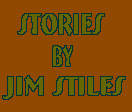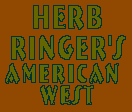

SHOULD WE GROW COWS ON THE MOON?
The West is a powerful place. Soaring mountains. Vast plains. Boisterous rivers. Huge spaces. But one attribute defines the West more than any other-aridity. Aridity imposes limitations and costs on human enterprises. Nowhere are the limitations and costs of aridity less apparent, yet reaping more degradation and destruction than the failed attempt to create a viable livestock industry in this dry region.
Livestock production which includes not only the grazing of plants, but everything it takes to raise a cow in the arid West including the dewatering of rivers for irrigation, the killing of predators to make the land safe for cattle, the fragmentation of landscapes with hay fields and other crops grown to fed cattle, combined with the pulverization of riparian areas under cattle hooves, and the displacement of native wildlife is by far the worse environmental catastrophe to befall the West.
If this think is a bit of hyperbole consider the following. Although no full accounting of the true cost of livestock production has ever been undertaken, we do know that livestock production is responsible for more soil erosion than any other factors in the West. It is the number one source of non-point water pollution. It is the leading cause of species decline and the major factor in the listing of more endangered species than any other cause. It is the major consumer of scarce western water, and the major factor in the extirpation of many native species from the wolf to the grizzly bear.
Most of these problems are ultimately traced to aridity and since there is little we as humans can effectively do to change the natural limitations of western geography, any proposals to make ranching somehow more benign soon run into these non-negotiable conditions.
Aridity has its cost. Low precipitation and frequent drought accounts for the Westís limited productivity. In many parts of the the moist and humid East one may be able to raise a cow year round on a single acre of ground. In many parts of the West 100-200 acres or more are necessary to sustain a cow. Such vast expanses require more investment in fencing, water developments and just time spent gathering stock. Not surprisingly Louisiana produces more beef than Wyoming-the Cowboy State. And despite the fame of Georgia peaches and peanut, the peach state produces more cattle than Nevada.
The wide open spaces that the West is famous for also means that livestock are far more vulnerable to predators. Most ranchers simply put their animals out on the range and allow them to fend for themselves for weeks or months at a time, giving predators plenty of opportunities for a free lunch. But in the moist East where most livestock are grazed on the back forty, one can readily monitor livestock daily and even put them in a barn or corral each night for protection. In the West, the response has been to extirpate the predators.
And while in the moist East the grass two hundred yards from a stream is just as green and lush as along the waterway, in the West, nearly all green lush vegetation is concentrated in the thin green line of riparian vegetation. Here cows congregate and trample streambanks, pollute waterways and destroy the riparian habitat that is essential to the survival of 75-80 percent of the Westís wildlife.
In the moist East where it rains you can grow hay or other water-loving crops for animal feed without irrigation. In the West we destroy rivers by damming them, and draining them to grow hay. And so it goes. If you want to grow livestock in the West you can only do it by subsidizing the livestock operation with environmental degradation-and not surprisingly as the many federally funded irrigation projects, predator control, and other state and federally funded projects demonstrate-a great deal of taxpayer money as well.
That is not to say there are not better or worse ways to ranch, and some ranchers are more conscious than others, but all must ultimately face the reality of geography. And aridity places economic limitations what ranchers can afford to spend to mitigate these problems created by geography and the use of a water-loving, slow-moving, dim-witted domestic animal as your stock.
Other natural limitations derived from aridity has to do with western rangeland ecosystems themselves. Ecosystems such as the Great Basin, Southwest grasslands, Palouse Prairie and others had few large grazing herds of bison, elk, and antelope. As a consequence these ecosystems are not only damaged by cattle and sheep grazing, they shatter. Plants tolerate only light grazing, if at all. Soil crusts important for preventing soil erosion and trapping moisture are destroyed by even a small number of hooves. Weed invasion is promoted by hooves that trample plants and soils.
Plus many native species simply can not compete or survive close proximity to great numbers of domestic livestock. Bighorn sheep die from alien diseases borne by domestic livestock. Other wildlife like sage grouse and desert tortoise must compete with livestock for forage and space, and have suffered a reduction in their numbers. Some animals are just persecuted to the point where their numbers have declined to brink of extinction like the wolf. Others are destroyed by hundreds of millions as pests like the black-tailed prairie dog. What is surprising about the decline of these and many other species is that they were not, for the most part, species that were scarce and of limited distribution. Rather these are animals that were so abundant that like passenger pigeon, many called them uncountable. Yet in the face of livestock production many have fallen on hard times.
One of the ways that ranchers compensate for low productivity is by operating on huge acreages. With rising land values, this is no longer an option. There are few parts of the West where you buy ranchland and pay off the mortgage rising cows.
This is also one reason why those who argue that ranching can prevent sprawl are articulating a strategy guaranteed to fail. Rising demand for land in many parts of the West is driving up land prices. High land prices means only millionaires can afford to get into ranching as a hobby, and why ranchers themselves are falling over themselves to sell out to developers to become millionaires. Supporting ranchers doesnít do anything to change demand. Subsidizing ranching operations either by ignoring the real environmental costs or through direct subsidy of operations through tax payer support of irrigation, predator control, low Ag property taxes and other means only delays, but does not prevent the ultimate sale of the ranch-if land prices rise as they will if demand remains constant, then at some point the price to sell out becomes too attractive to pass over. The solutions to sprawl lies not in promoting the western livestock industry, but elsewhere in proven techniques like fee purchase of critical lands, conservation easements, land exchanges, and land use zoning.
Ranching in the West has always been restricted to lands of marginal value-the lands no one else wanted. In todayís West there are few lands that no one else wants, and in all likelihood the western livestock industry will disappear like that of the southern plantation. Ranching is not a lifestyle, but a death style. Like the southern plantation owner it depends in a large upon the exploitation of others. In the case of the rancher, it has depended upon the cheap labor of the cow hand, the exploitation of the landscape, the generous support of the taxpayer through a host of subsidies, and least we forget, the often brutal treatment and exploitation of animals as well.
Though I make an allusion to southern slavery, I donít wish to imply that ranchers are bad people. Like George Washington and Thomas Jefferson who were both great men dedicated to freedom despite the fact that they held slaves, ranchers are good people trying to make a living raising domestic animals in a place that is ill-suited for such endeavors. It is the institution of ranching that is bad, not the people practicing it. Nevertheless, the sooner the livestock industry disappears from the West, the better off all of us will be.
What will a West without cows be like? Wolves may again howl beyond the city limits of Boise and Salt Lake. Salmon once again may thong up the Salmon, John Day and Grand Rhonde. Bison could roam just beyond the city limits of Casper, Denver and Billings. This West wonít be some throw back to the times of Lewis and Clark-we have crossed too many ecological thresholds for that, but it almost certainly will be a West that is more productive, more beautiful, and more wild than at present.
Companion Story: A Reasonable Alternative? By Ed Marston







